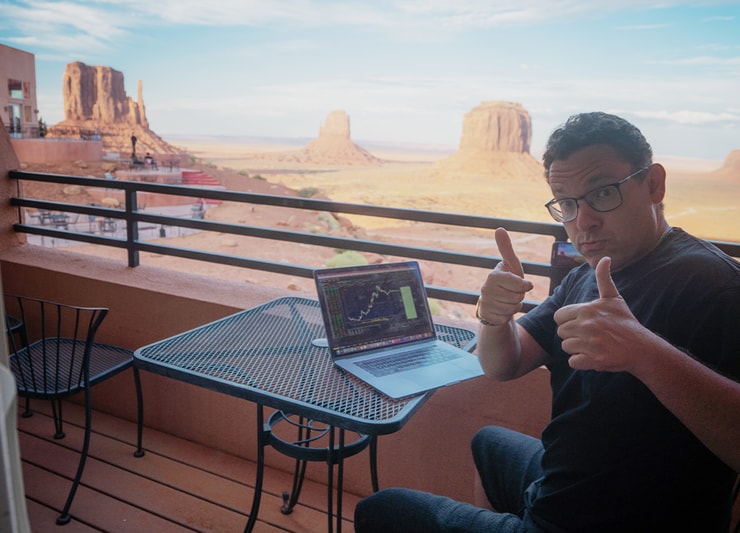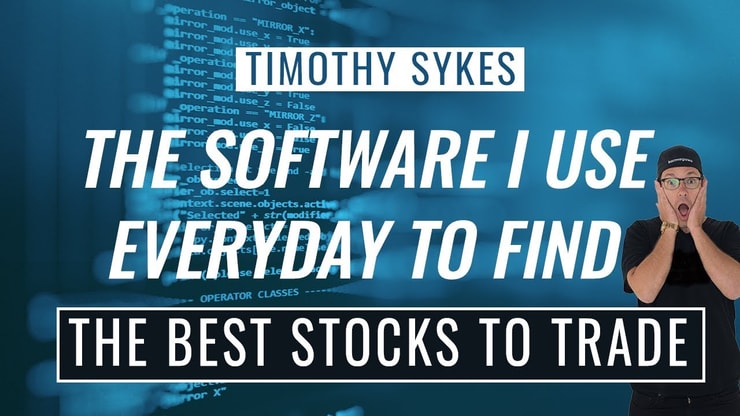High-volume stocks in Canada refer to stocks that experience a large number of shares being bought and sold within a specific time frame, usually a trading day. These stocks are often the focus of traders because high volume can indicate momentum and generate opportunities for profit. Understanding how to track and trade these stocks is crucial for success in the Canadian markets.
You should read this article because it provides a comprehensive guide on trading high-volume stocks in the Canadian markets, offering crucial insights into stock volume dynamics, liquidity, and trading strategies.
I’ll answer the following questions:
- What are high-volume stocks in Canada?
- Why is stock volume significant in trading?
- What are the benefits of high volume in stocks?
- What potential risks come with trading high-volume stocks?
- How are stock liquidity and volume related?
- What makes a stock highly liquid in the Canadian market?
- Why does volume matter in penny stock trading?
- What tools and platforms are best for tracking stock volume in Canada?
Let’s get to the content!
Table of Contents
- 1 What Are High-Volume Stocks?
- 2 Understanding Stock Volume Dynamics
- 3 The Relationship Between Stock Liquidity and Volume
- 4 Penny Stocks and Volume: A Special Mention
- 5 Strategies for Trading High-Volume Stocks in Canada
- 6 Tools and Platforms for Tracking Stock Volume in Canada
- 7 Key Takeaways
- 8 FAQs About High-Volume Stocks in Canada
- 8.1 How Is Stock Volume Calculated?
- 8.2 Can High-Volume Indicate a Potential Stock Price Movement?
- 8.3 Are High-Volume Stocks Always a Safe Bet?
- 8.4 How Do Futures Affect High-Volume Stock Prices in Canada?
- 8.5 What Should Users Consider When Choosing a Site for Tracking Stocks?
- 8.6 How Do Firms Use Portfolios To Capitalize on High-Volume Stocks?
What Are High-Volume Stocks?
High-volume stocks are shares of companies that see a significant amount of trading activity over a given period. This could be due to various factors such as market news, analyst recommendations, or changes in business fundamentals. In my years of trading and teaching, I’ve found that understanding the nuances of high-volume stocks can offer a strategic edge.
The Significance of Stock Volume in Trading
Stock volume is the number of shares traded during a specific time frame. It’s a critical metric for traders and investors alike. High volume often indicates strong investor interest and can lead to price movement. In the Canadian market, stocks like Toronto-Dominion Bank (TD) and Suncor Energy Inc. often see high volume due to their industry significance.
Understanding Stock Volume Dynamics
Volume dynamics can offer insights into the strength or weakness of a price trend. For instance, a high volume during an uptrend suggests strong buying interest. Market data, including volume, is crucial for making informed trading decisions.
Benefits of High Volume in Stocks
High volume can provide several advantages, such as better liquidity, which makes it easier to enter or exit positions. High-volume stocks also tend to have smaller spreads, meaning less cost to traders.
Potential Risks of High-Volume Stocks
While high volume can indicate strong market interest, it’s not always a positive sign. High volume can also signify potential tops or reversals in trends. It’s essential to consider other market factors and not base your trades solely on volume.
High-volume doesn’t mean safe trading. Often, high volume is coupled with high volatility, especially in the realm of penny stocks. Volatility can be both an opportunity and a risk. It can offer quick gains but can also lead to rapid losses if you’re not careful. Understanding the volatility index of a stock along with its volume can give you a more rounded view. For a deep dive into this topic, read my article on high-volatility penny stocks.
The Relationship Between Stock Liquidity and Volume

Liquidity and volume are closely related but not the same. A stock can have high volume but low liquidity if the shares are not easily convertible to cash. In my experience, trading in highly liquid stocks can significantly reduce risks and improve potential returns.
What Makes a Stock Highly Liquid?
A highly liquid stock is easy to buy or sell without causing a significant impact on its price. These stocks often have high volume and are popular among traders. Companies like Barrick Gold Corporation and TC Energy Corporation are examples of highly liquid stocks in the Canadian market.
Advantages of Trading in Highly Liquid Stocks
Trading in highly liquid stocks offers advantages like tighter spreads and lower slippage. It also allows for quicker execution of trades, which is crucial for day traders and those using high-frequency trading strategies.
Penny Stocks and Volume: A Special Mention
Penny stocks are low-priced stocks that offer high potential returns but also come with high risks. Volume is especially crucial when trading penny stocks, as low volume can lead to price manipulation.
Characteristics of Penny Stocks
Penny stocks are generally priced below $5 and are often not listed on major exchanges like the NYSE or NASDAQ. Instead, you’ll find them on OTC markets or the CSE. Companies like Athabasca Oil Corporation (ATH) and Denison Mines Corp (DML) are examples of penny stocks that see high volume trading in Canada.
Why Volume Matters in Penny Stock Trading
High volume in penny stocks can indicate strong investor interest or upcoming news. However, it’s crucial to be cautious as high volume can also be a result of pump-and-dump schemes. Always do your due diligence before trading these volatile securities.
Strategies for Trading High-Volume Stocks in Canada

Trading high-volume stocks requires a well-thought-out strategy. In my years of trading, I’ve found that volume can serve as a powerful confirmation indicator, especially when combined with other technical and fundamental analysis.
Stock scanners are indispensable tools for traders who want to capitalize on high-volume stocks. These tools can filter stocks based on specific criteria like volume, price action, and more. This way, you can quickly identify potential trading opportunities without sifting through endless data. Stock scanners can be particularly useful for day traders who need to make quick decisions based on real-time information. Want to know more about how to use stock scanners effectively? Check out this guide on how to use stock scanners.
Using Volume as a Confirmation Indicator
Volume can confirm the validity of a price move. For example, a breakout on high volume is more likely to sustain than one on low volume. This is a strategy I often employ in my own trading and teach to my students.
Volume and Breakout Trading
High volume can indicate the start of a new trend, commonly seen during breakout trading. Stocks like Air Canada often see increased volume during breakout moves, making them worth watching.
Avoiding False Signals with Volume Analysis
Volume analysis can help you avoid false signals in trading. For example, a price movement on low volume may not be as reliable as one on high volume. It’s a crucial aspect to consider in your trading strategy.
Tools and Platforms for Tracking Stock Volume in Canada

There are various tools and platforms available for tracking stock volume. These range from basic stock screeners to advanced trading platforms. In my experience, using advanced platforms can provide a significant edge in trading high-volume stocks.
While tracking stock volume is crucial, it’s equally important to understand the sectors these stocks belong to. Different sectors have different market dynamics, and high volume in one sector might mean something entirely different in another. For instance, high volume in tech stocks might be driven by product launches or mergers, while in energy stocks, it could be due to oil price fluctuations. To get a comprehensive understanding, you should also familiarize yourself with different stock sectors.
Popular Stock Screeners and Their Features
Stock screeners like those offered by NYSE or NASDAQ can filter stocks based on volume, price, and other criteria. These are useful for initial research but may lack advanced features.
Benefits of Using Advanced Trading Platforms
Advanced trading platforms offer real-time data, advanced charting tools, and other features that can aid in trading high-volume stocks. These platforms often provide more comprehensive data, making them suitable for serious traders.
When it comes to trading platforms, StocksToTrade is first on my list. It’s a powerful trading platform that integrates with most major brokers. I helped to design it, which means it has all the trading indicators, news sources, and stock screening capabilities that traders like me look for in a platform.
I use StocksToTrade to scan for news, tweets, earning reports, and more — all covered in its powerful news scanner. It has the trading indicators, dynamic charts, and stock screening capabilities that traders like me look for in a platform. It also has a selection of add-on alerts services, so you can stay ahead of the curve.
Grab your 14-day StocksToTrade trial today — it’s only $7!
Key Takeaways

Understanding high-volume stocks and how to trade them can offer significant advantages. From liquidity benefits to strategic trading, high-volume stocks are worth the attention for anyone serious about trading in the Canadian markets.
Trading isn’t rocket science. It’s a skill you build and work on like any other. Trading has changed my life, and I think this way of life should be open to more people…
I’ve built my Trading Challenge to pass on the things I had to learn for myself. It’s the kind of community that I wish I had when I was starting out.
We don’t accept everyone. If you’re up for the challenge — I want to hear from you.
Apply to the Trading Challenge here.
Trading is a battlefield. The more knowledge you have, the better prepared you’ll be.
What high-volume stocks are on your watchlist? Let me know in the comments — I love hearing from my readers!
FAQs About High-Volume Stocks in Canada
Understanding high-volume stocks is crucial for trading in the Canadian markets. Here are some frequently asked questions that can provide further insights.
How Is Stock Volume Calculated?
Stock volume is calculated by counting the number of shares traded during a specific time frame. It’s a straightforward yet crucial piece of information for traders.
Can High-Volume Indicate a Potential Stock Price Movement?
Yes, high volume can indicate potential price movement. However, it’s essential to consider other market factors and not base your trades solely on volume.
Are High-Volume Stocks Always a Safe Bet?
High-volume stocks are not always a safe bet. While they offer advantages like better liquidity and tighter spreads, they can also be volatile and subject to market risks. Always conduct thorough research — and watch out for shady company leaders and other signs of a pump — before making any trades.
How Do Futures Affect High-Volume Stock Prices in Canada?
When tracking high-volume stocks in Canada, futures can significantly impact prices, particularly for companies in sectors like crude oil. Investment firms often use this data to adjust their portfolio strategies. Sites that track the TSX (Toronto Stock Exchange) provide valuable insights, and it’s essential to read the disclaimer regarding the rights and trading purposes of such information.
What Should Users Consider When Choosing a Site for Tracking Stocks?
Users should look for sites that offer real-time prices and futures data, especially when tracking high-volume stocks. It’s crucial to consider the growth trajectory of companies, and the firm’s portfolio focus. For ETFs like HUT and BTO, understanding how futures impact prices can be a part of a savvy investment strategy.
How Do Firms Use Portfolios To Capitalize on High-Volume Stocks?
Investment firms utilize detailed portfolios to manage funds effectively, often targeting high-volume stocks for growth opportunities. They rely on sites that offer up-to-date prices and information on futures. When considering ETFs, like HUT or BTO, firms assess the potential rights and disclaimers provided on platforms like the TSX to make informed decisions.





Leave a reply